Many law firms and businesses put off creating and using a standardized workstation image. Instead, they use whatever operating system comes pre-configured on the computers they purchase. Sometimes they will install a clean operating system and configure each machine from scratch for each newly purchased computer. This is a mistake which can be both expensive and dangerous. Thankfully, your computer environment can be made more secure, and your IT costs can be reduced, by implementing a standard workstation image.
What is Workstation Imaging?
In case you’re not familiar with the term, computer or workstation imaging is the process of capturing the state of all the software and data on a computer for the purpose of copying it onto another computer. This technique is most often used to set up a new machine, to restore a machine to a clean state after the departure of its previous user or to roll back a machine on which the system has been heavily damaged to a known working configuration.
Because systems, and your firm’s needs, do change over time, it’s important when using a workstation image that it be reviewed and updated regularly. Quarterly updates of an image will minimize the amount of extra system updates or configuration changes which need to be made each time it is applied, to account for changes since the image’s original creation.
Improving Security
So how does deploying workstations and laptops with an image improve security?
First, to protect any computing environment, it’s important to know how all the systems are configured. If all of them are running operating systems and software which are configured differently because they were configured by the computer’s manufacturer at different release cycles, or because they were configured by different IT professionals as each computer was set up, the systems will have different settings and policies in place. If security software and policies are put into place based on how one set of computers is configured, the outlier computers can be overlooked and be left vulnerable. If one of these outliers contracts a virus, this can then damage the entire environment.
Additionally, most computers prepared by major manufacturers also come pre-loaded with helpful software, such as system software and driver updates. Because these pieces of software come pre-loaded on a very large number of systems, any security vulnerabilities they may have are common targets for malicious software or for hackers. Even seemingly benign OEM software and driver update programs are often vulnerable to man-in-the-middle and other attacks, making it far too easy for a laptop in use at an airport or coffee shop to become infected by maliciously injected software.
For more information on this type of vulnerability, see this great whitepaper by our two-factor authentication partner, Duo Security.
Clean operating system installations of new equipment, performed exactly the same way, every time, resolves these security concerns with minimal effort on your part, and a workstation image will make this a quick and easy process.
Dropping IT Costs
Security is paramount, but what about the effect on your IT budget? Even after factoring in the cost of creating the workstation image and performing regular (preferably, quarterly) reviews and updates to it, workstation imaging will almost always reduce your overall IT costs.
The most visible cost savings is in disaster recovery situations. If you have a workstation on which the system has been badly damaged, whether by a virus or just an ill-timed power outage, restoring it to a working state can mean hours of work. If you don’t have a spare computer ready to go, this also means lost hours of productivity for the user. With a workstation image, the system can be back up, running and fully configured in a fraction of the time, and all that remains is to load the user’s profile data back onto it.
A word to the wise: You shouldn’t be saving any critical user data on the local workstation itself, or you may be forced into pursuing costly data recovery measures regardless!
A more easily overlooked cost-savings comes into play in day-to-day training and support scenarios. If every user is operating with the same baseline system, it’s much easier to provide training and documentation to new employees, and it’s much quicker (and therefore cheaper) for your IT resources to resolve users’ issues, because the issues and errors will tend to be more similar the more similar the systems themselves are. Even if this trims just five or ten minutes off each IT support request your users have, it will add up quickly.
Okay, so how do you get started?
If you aren’t familiar with workstation imaging, don’t attempt this on your own. Contact us or your IT provider. We’d be happy to help.



